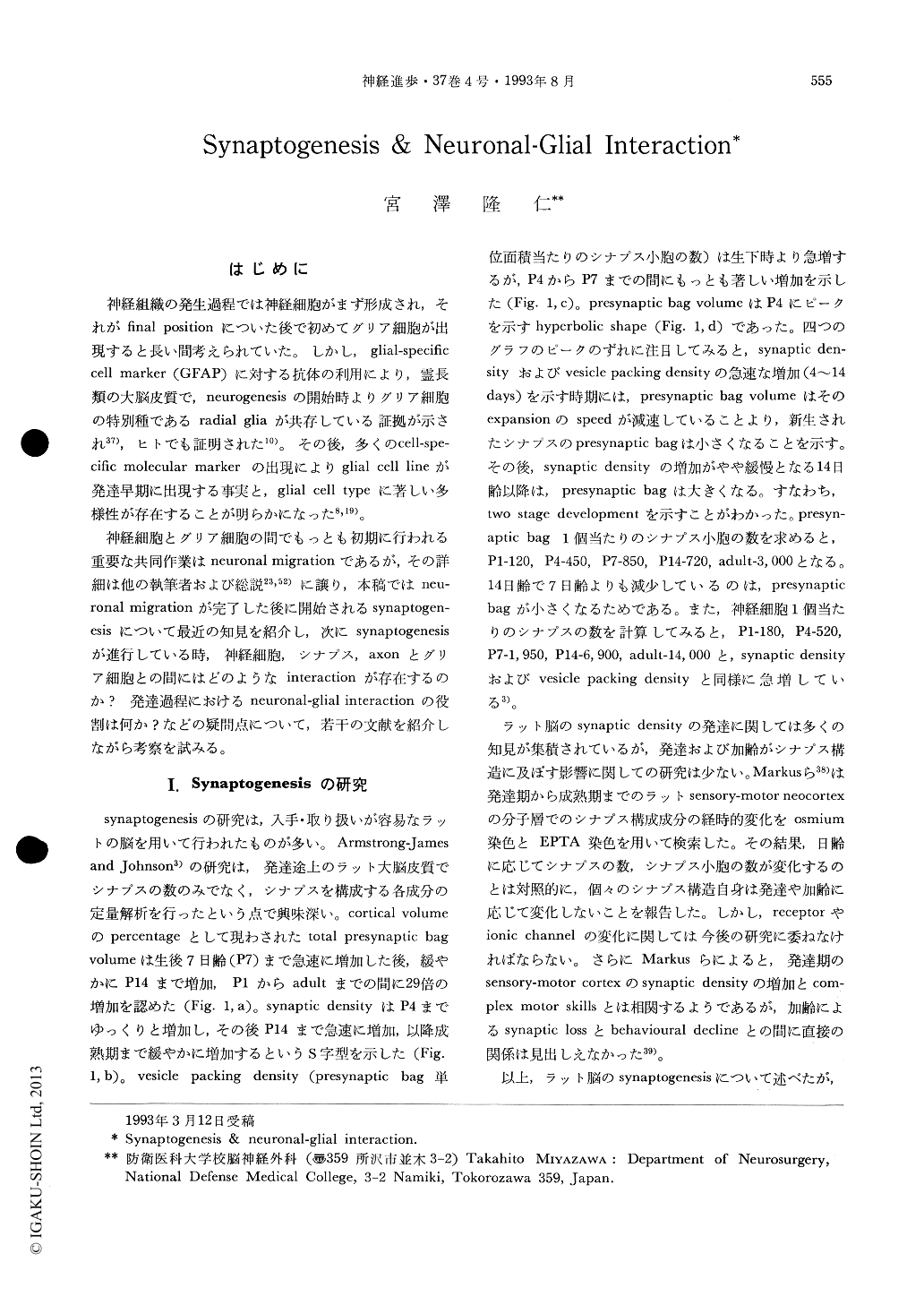Japanese
English
- 有料閲覧
- Abstract 文献概要
- 1ページ目 Look Inside
はじめに
神経組織の発生過程では神経細胞がまず形成され,それがfinal positionについた後で初めてグリア細胞が出現すると長い間考えられていた。しかし,glial-specific cell marker(GFAP)に対する抗体の利用により,霊長類の大脳皮質で,neurogenesisの開始時よりグリア細胞の特別種であるradial gliaが共存している証拠が示され37),ヒトでも証明された10)。その後,多くのcell-specific molecular markerの出現によりglial cell lineが発達早期に出現する事実と,glial cell typeに著しい多様性が存在することが明らかになった8,19)。
神経細胞とグリア細胞の間でもっとも初期に行われる重要な共同作業はneuronal migrationであるが,その詳細は他の執筆者および総説23,52)に譲り,本稿ではneuronal migrationが完了した後に開始されるsynaptogenesisについて最近の知見を紹介し,次にsynaptogenesisが進行している時,神経細胞,シナプス,axonとグリア細胞との間にはどのようなinteractionが存在するのか? 発達過程におけるneuronal-glial interactionの役割は何か?などの疑問点について,若干の文献を紹介しながら考察を試みる。
The use of numerous cell specific molecular markers has confirmed the early emergence of glial cell lines and showed the great diversity of glial cell types during embryonic ages. This diversity seems to play a crucial role in the neuronal-glial interaction. The research on synaptogenesis has mainly depended on ultramicroscopical quantitative analysis. Monoclonal antibodies against the synaptic vesicle-specific proteins recently provided an alternative strategy for studying ontogenic synapse formaion. The overproduction and redundancy of synapses are an important anatomical substrate for the plasticity of the developing brain. The presence of axo-glial synapses indicates the possibility that axons may influence the development of glial cells, and vice versa. The intimate neuronal-glial relationship appears to be a key factor in both synaotoeenesis and synaotic turnover.

Copyright © 1993, Igaku-Shoin Ltd. All rights reserved.


